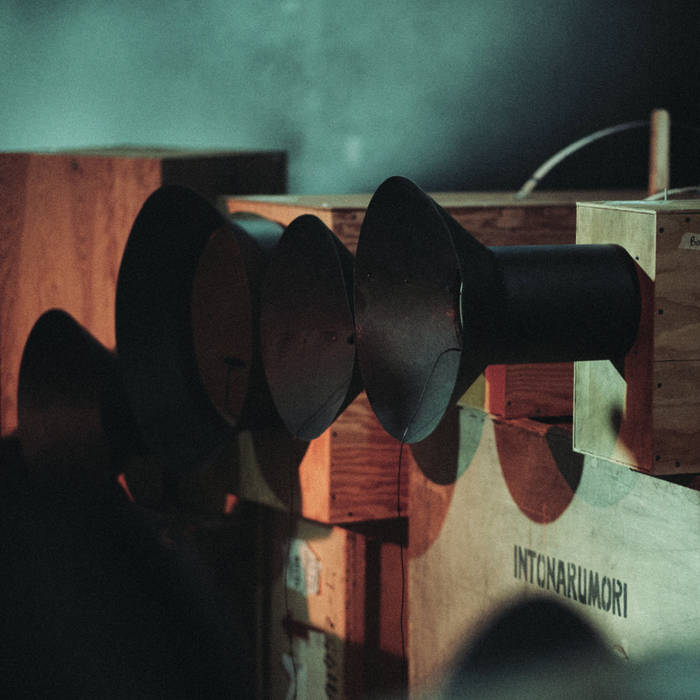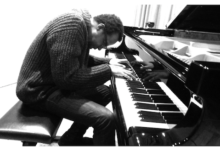In the second decade of the twentieth century, one of Italy’s most revolutionary artistic movements was born in the face of rapid technological and social change: Futurism. One of its key figures was Luigi Russolo, a painter, inventor, and composer. In 1913, he published the manifesto ‘The Art of Noises’, which proclaimed that if the world’s sounds have changed, then music should keep up. Instead of using classical instruments and harmonies, Russolo advocated the use of noise – the hum, screech, shriek of the new soundworld of machines.
To realise his vision, he constructed a series of instruments called intonarumori (literally ‘noise intoners’). They were mechanical devices resembling boxes with large resonance tubes with cranks and levers to produce various sounds. Each instrument was designed to imitate a specific type of noise – from thunder and rumblings to howls and hums to grinding noises and explosions. Intonarumori controlled the intensity and pitch of the sound, making it possible to create complex compositions of noises.
Although Russolo’s ideas and achievements are still remembered today, the original instruments have not survived. They were lost or destroyed during World War II. But the idea remained in documents, sketches, and archival photographs. Almost a hundred years later, in 2008, the Italian composer and musicologist Luciano Chessa took on the ambitious task of reconstructing the intonarumori. The process was based on analysing preserved source materials, such as technical drawings, construction descriptions, and accounts of performances by Russolo and his team. Chessa’s goal was not only to faithfully recreate the instruments’ appearance but, above all, to restore their original sound and function as carriers of sonic futurism.
The reconstructed intonarumori premiered in 2009 in San Francisco before heading to the Performa 09 biennial in New York as part of the 100th anniversary of Italian Futurism. Two years ago, they first came to Europe, at the Sanatorium Dźwięku Music Festival, and later visited Oslo and London, among other places.
Sokołowsko is a small town that was a health resort in the nineteenth century, modeled on Davos in Switzerland. Together with the festival curator, Chessa invited sixteen musicians (Guoste Tamulynaite, Mariam Gviniashvili, Martyna Kosecka, Teoniki Rożynek, Aleksandra Słyż, Martyna Poznańska, Piotr Peszat, Jacek Sotomski, Klaus Holm, John Hegre, Jon Wesseltoft, Mike McCormick, Zosia Hołubowska, Gerard Lebik, Marek Chołoniewski, Jennifer Torrence and conductor Luciano Chessa) to present four pieces: the remaining fragment of Russolo’s original composition from 1916, as well as three pieces composed by contemporary artists invited by the orchestra. The effect of listening to these loud noises in a quiet village between the mountains was extraordinary. Modern artists and composers have approached these machines with renewed vigor, treating them as both a tool and a symbol of a radical break with musical tradition.
In ‘Rhythm in Flux’ by Mariam Gviniashvili, the group builds a rhythmic, abrupt, aggressive composition. It’s a bit industrial, with rolling sounds. The ‘tubes’ sound like percussion, and the jerky sounds in intervals create an industrial polyphony. A piece, ‘Ill Tempered Intonarumori’ by John Hegre, is the opposite of the above. Here, each instrument ais explored using the techniques of the Polish Sonorism movement of the 1960s, focusing on timbre, texture, or dynamics, as each intonarumori subtly fades into the background. It begins with single rasps and metallic phrases that gradually harmonise, revealing their orchestral potential. There are dense bass sounds on one side, screeching sounds on the other, and some other sounds like human voices. The whole thing gradually develops into a colourful, coherent structure that orchestrally explodes in the finale.
The exception here is the composition by Aleksander Słyż and Gerard Lebik, the longest on the album, but one that weaves electronics into the sounds of noise instruments. Here, the instruments are processed and resonated. The track lasts over twenty minutes and is a form of recycling their original sound. It sounds more powerful, taking on a drone-like coating and structure that gradually extends and develops The piece becomes a dense, granular wall in the middle, perhaps reminiscent of white noise but highly intense and monumental.
The counterpoint is the group’s performance of Russolo’s fragment ‘Risveglio di una città’ (‘Awakening Of The City’). This piece shows the non-musicality of intonarumori, which aims to produce urban noise, the sounds of everyday life. The piece sounds like a morning drive through a metropolis, with a microphone stuck out of a car window and left recording. It recalls a contemporary field recording, a recording of urban noise.
Although the intonarumori were born out of the spirit of the Industrial Revolution, it remains relevant today as a manifesto of the constant search for new forms of expression and proof that even noise can become art. And even though today’s sounds are entirely different, this impression is an excellent reference to them. This closes the loop and shows how these expressive and noisy acoustic instruments can function as peculiar sounds even a hundred years after their creation.




